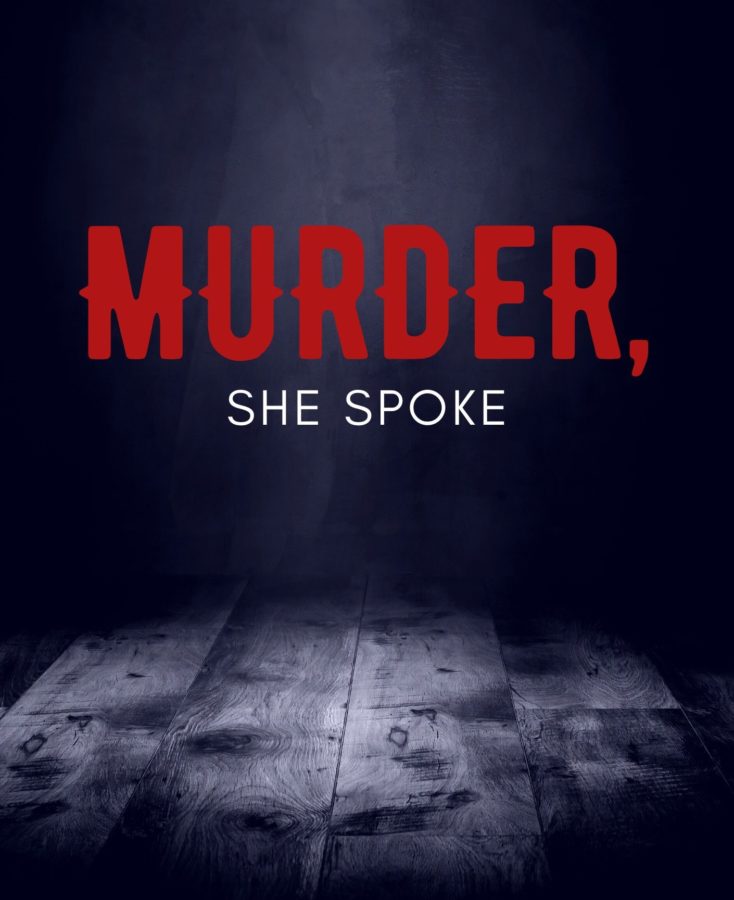Murder, she spoke
The commercialization and dissociation of true crime
In a singular moment, the world shatters. A single decision, a single moment or a single blink and nothing is ever the same. Grief and agony replace joy and possibility. Nightmares twist into reality. Denial. Sobs. Brokenness. Well, at least for some. For others, they sit down with a cup of coffee and scoff at the story: “If I was in their shoes…” Studios and streaming services take their profits and turn to the next project. Listeners give a like on the video and continue with their day. Critics chirp about the acting, often ignoring or not being cognizant of how the motion picture deviates from the story that took place in the tangible world. The characters aren’t just simply figurative pieces of imagination, and the conflicts they face didn’t just happen to further a plot. As the popularity of true crime continues to expand, the fine line between reality and entertainment begins to blur. This increased consumerism and commercialization of the genre in recent years is unprecedented. But, is true crime truly an ethical form of media?
Definition & Origins
Today, true crime has grown to be a prominent genre across the media and pop culture, largely due to shows, films, books, podcasts and online videos that have been released. The sole origin of the genre may depend on one’s definition of what true crime is. As the name suggests, true crime tells the stories of physical events that occurred in the real world, largely circling around disappearances and homicides. The case could be solved or unsolved, from 1940 or from 2010, but it all fits under the umbrella of true crime. One of the earliest forms of true crime recorded was in the 1500s when pamphlets were printed to inform the public of crimes that occurred in the area. While these pamphlets weren’t necessarily spread wide like true crime is today, they still were one of the first examples of nonfiction crimes being recorded and published. This ultimately evolved into a new fortified genre of purely nonfiction crime, Truman Capote’s book “In Cold Blood ” being one of the first in the genre. The book, as explained by website Humanities and author Zach Thomas, “[F]ocuses on balancing the viewpoints among the killers, the victims, and then the investigators. [It] raised questions on important issues such as the honesty of journalism and the role of mental health in criminal proceedings [that has] earned its place as a classic in American nonfiction literature.” Thus, an increased fascination with true crime began.
Glorification
The engrossment surrounding true crime has only bloomed with time. While books are still a large part of true crime, it’s truly within online forums that true crime has thrived due to technology’s timeliness and convenience. In the past decade, the streaming platform Netflix has released a stream of true crime shows and documentaries, the most notable in recent months being “Dahmer – Monster: The Jeffrey Dahmer Story.” Though the show did receive backlash for arguably glorifying the serial killer, Jeffrey Dahmer, it still became one of Netflix’s most watched shows in 2022, reaching over 3.7 billion minutes streamed within the first week of its release. Why? Well, for one reason, Evan Peters. Known for his roles in “X-Men” and “American Horror Story,” it was Peters who portrayed Dahmer on-screen and it was clips of him from the show that went viral across social media. It’s no secret that celebrities are often romanticized by fans; Peters himself is no stranger to this as during the first season of “American Horror Story” though his character Tate Langdon was a school shooter, he was still glamorized by fans.
Similarly in this case it’s vital for fans to be able to separate Evan Peters portraying Dahmer and Jeffrey Dahmer in real life. One can appreciate and support Peters, but applying the same adoring words to Jeffrey Dahmer is disparate. Yet on social media, one can find many posts expressing how Dahmer was simply misunderstood and how they felt sorry for him. While it’s true that serial killers often have traumatic pasts that sculpt them into the people they became, how can one feel bad for the killer while the victims are pushed to the side? But Dahmer is ultimately just one example of the glorification of serial killers. Another “popular” serial killer is Ted Bundy. Zac Efron (known for his roles in movies like “High School Musical” and “The Greatest Showman”) played Bundy in 2019 in the film “Extremely Wicked, Shockingly Evil and Vile.” In an article by The Guardian, author Kira Cochrane states: “The idea behind the film is to show how Bundy took the world in; how he became, repulsively, a kind of folk hero. Relatively handsome, well educated and middle class, he couldn’t possibly be a killer in many people’s eyes… [t]his is the argument for having Efron in the role – that he captures the charisma and image that enabled Bundy to be believed and even idolized.” Bundy was and still is a serial killer that the internet remarks as charismatic, so casting Efron, an actor considered a heartthrob, does make sense. But regardless of how charming Bundy appeared, he brutally murdered and sexually assaulted at least 28 women. And now what? The families of these women get to watch people talk about how attractive they thought their loved one’s killer was? Bundy put so many women in such inhumane and horrific situations. Now he has fans?
Frozen In Time
At the end of the day, Dahmer and Bundy took the lives of real people. There is speculation as to what the true number of the lives both took is, but confirmed, Dahmer took the lives of Steven Hicks, Steven Tuomi, Jamie Doxtator, Richard Guerrero, Anthony Sears, Raymond Smith, Edward W. Smith, Ernest Miller, David C. Thomas, Curtis Straughter, Errol Lindsey, Anthony Hughes, Konerak Sinthasomphone, Matt Turner, Jeremiah Weinberger, Oliver Lacy and Joseph Bradehoft. Bundy took the lives of Lynda Anne Healy, Donna Gail Manson, Susan Rancourt, Roberta Parks, Brenda Carol Ball, Georgeann Hawkins, Denise Naslund, Janice Ott, Nancy Wilcox, Melissa Smith, Laura Aime, Carol DaRonch, Debra Kent, Caryn Campbell, Julie Cunningham, Denise Oliverson, Melanie Cooley, Lynette Culver, Susan Curtis, Margaret Bowman, Lisa Levy, Kathy Kleiner, Karen Chandler, Cheryl Thomas, Kimberly Leach and possibly so many more. While these people are often reduced to characters briefly introduced in one or two episodes of a show, in real life, they were so much more than that. They had their own dreams, personalities, hopes and ambitions. They were real. However, this level of disassociation towards the people involved isn’t limited to the victims themselves. In “Dahmer – Monster: The Jeffrey Dahmer Story,” this is starkly demonstrated in the show’s recreation of Dahmer’s trial. The show depicts when Errol Lindsey’s sister, Rita Isbell, is face-to-face with Dahmer in the courtroom. When one compares the show to the footage from the actual court hearing in 1992, it’s hard to tell the difference. Even to Isbell herself: “If I didn’t know any better, I would’ve thought it was me,” Isbell told Insider. “Her hair was like mine, she had on the same clothes. That’s why it felt like reliving it all over again. It brought back all the emotions I was feeling back then. I was never contacted about the show. I feel like Netflix should’ve asked if we mind or how we felt about making it. They didn’t ask me anything. They just did it. But I’m not money hungry, and that’s what this show is about, Netflix trying to get paid.” How can someone who lived through the hell of losing someone dear to them in such a horrific way have their face plastered into a Netflix show recreating one of their most vulnerable and raw moments for millions of people to watch? However, creator of the show Ryan Murphy has denied not reaching out to family members of the victims and said that: “Over the course of the three, three and a half years when we were really writing it, working on it, we reached out to 20, around 20 of the victims’ families and friends, trying to get input… and not a single person responded to us. So we relied very, very heavily on our incredible group of researchers.” But honestly, if they truly wanted to know intricate details about the victims, wouldn’t they have been more persistent in trying to get in touch with their families? Recreating how someone’s life was stolen from them is far from respectful to the victim themself, but bare minimum, integrity should be shown to their families.
Stepping Out of the Narrative
The media’s attention on true crime isn’t completely derogatory. Unsolved cases, one example being the Murdaugh case, have been reopened due to people demanding answers and offering insights into the case. In addition to solving cold cases, people have been more generally interested in newer cases. For example, when four students at Idaho State University were murdered on Nov. 13, 2022, the media was much more persistent on law enforcement to release information about the case because they wanted to help solve the case. With the technology that the world has now, it can feel like all the information for a case has been released online, but when it comes down to it, no one will truly know all of the details regarding any case. No one will truly get to understand the inner workings of a serial killer’s mind or know exactly what went through their head. Instead of inserting endless opinions and creating a way for corporations to profit from people’s suffering, respect should be shown to the families of the victims and the victims themselves. No person should be inserted into a show with a narrative set around the killer without their consent, and no one should have to live with the knowledge their loved one’s death is being reenacted into a show people watch in their spare time. Because while it’s important to stay educated and learn from the past so we can better protect ourselves and each other, no one can go back in time and change what happened. Families and friends can only try their hardest to move on and cherish the memories they made of their loved ones. We can learn about cases without glorifying and romanticizing the people involved, because ultimately it’s up to the consumer to define if true crime is education or entertainment. That’s the truth of true crime.

Ella Oberle is a senior at Bridgeland High School, third-year newspaper staff member and the Co-Editor in Chief, Co-Design and Feature editor of The Bridge...










